

William Stopford
Every SUV, ute and van discontinued in Australia in 2025
4 Hours Ago
The Toyota Granvia VX is an expensive but luxurious van with windows designed to shuttle clients or guests in comfort.

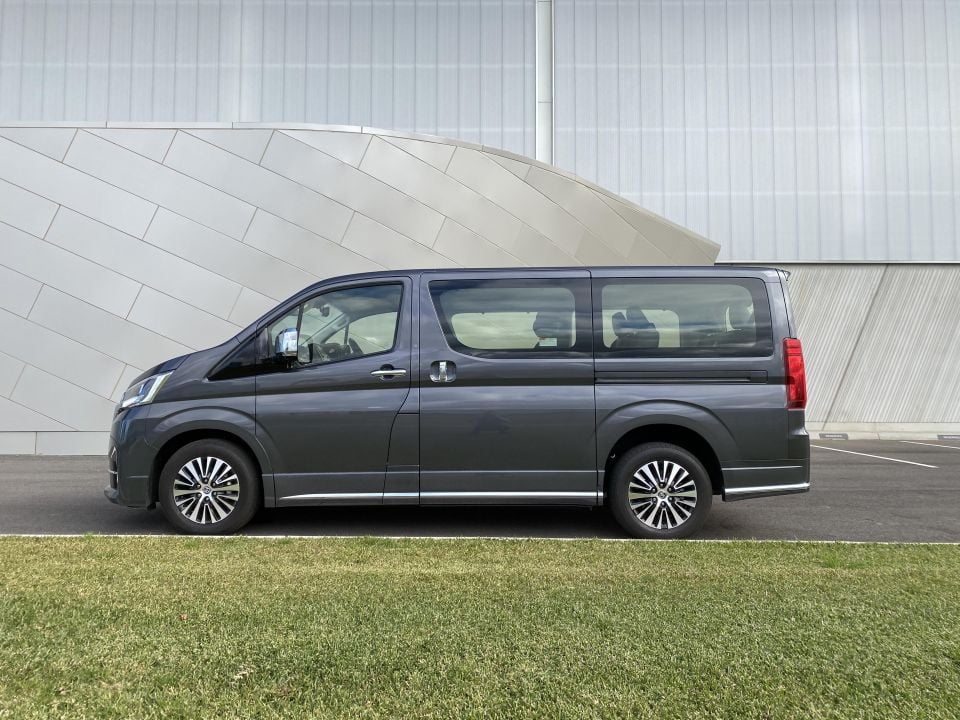

Senior Contributor
New from
$64,090
excl. on-roads

Senior Contributor
New from
$64,090
excl. on-roads


Senior Contributor
New from
$64,090
excl. on-roads

Senior Contributor
New from
$64,090
excl. on-roads
Quickly see how this car stacks up against its competition. Select any benchmark to see more details.
Where expert car reviews meet expert car buying – CarExpert gives you trusted advice, personalised service and real savings on your next new car.
Toyota vacated the traditional ‘people-mover’ market by axing its long-serving Tarago, leaving the shrinking segment to Kia’s dominant Carnival and the Honda Odyssey.
At a similar time it introduced a new model, the Toyota Granvia. This HiAce van-based luxury shuttle is quite a different proposition, designed to tackle the conceptually similar Mercedes-Benz V-Class and Volkswagen Multivan.
Like these two German-branded models, the Granvia pairs rugged commercial van underpinnings with sumptuous cabin trimmings and a level of modern safety features that may come as a surprise.



The entry-level Toyota Granvia kicks off at $64,090 before on-road costs, which equates to a drive-away price in Melbourne of $69,360. We’re looking at the VX grade, which costs $75,726 before on-roads or $83,129 drive-away in Melbourne (stamp duty varies by state).
To put that circa $76,000 list price into context, a Mercedes-Benz V-Class V220d costs $83,130 before on-roads, while the MY19 Volkswagen Multivan TDI450 T6 SWB cost $80,990 before on-roads.
We’re expecting a ‘T6.1’ update to be detailed soon, though the pricing should be similar. A fully-specified Kia Carnival Platinum costs $63,490 before on-roads.
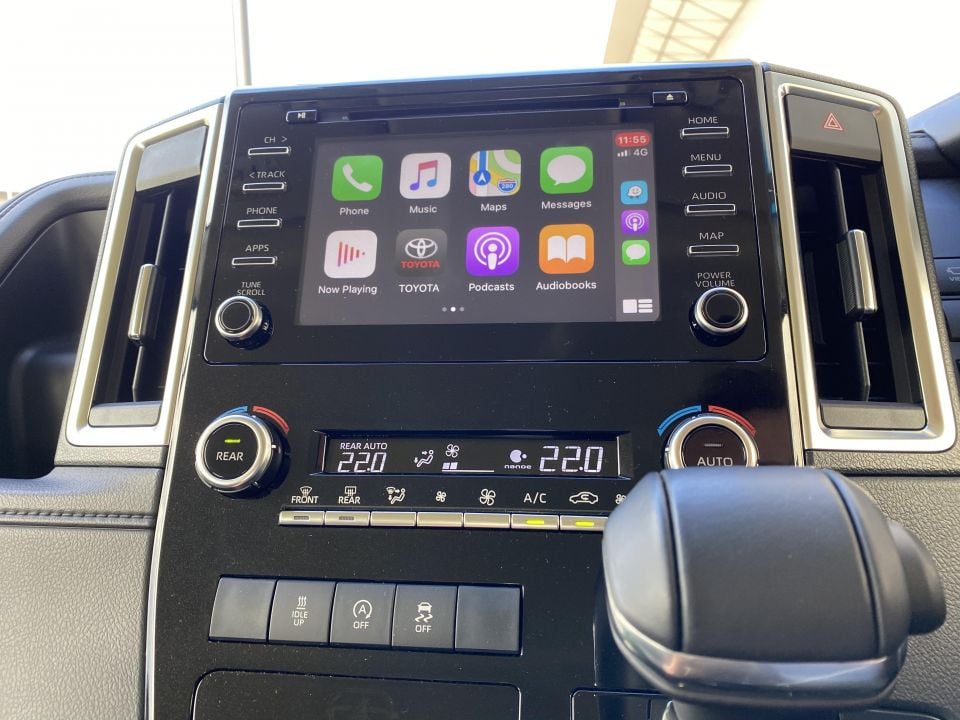

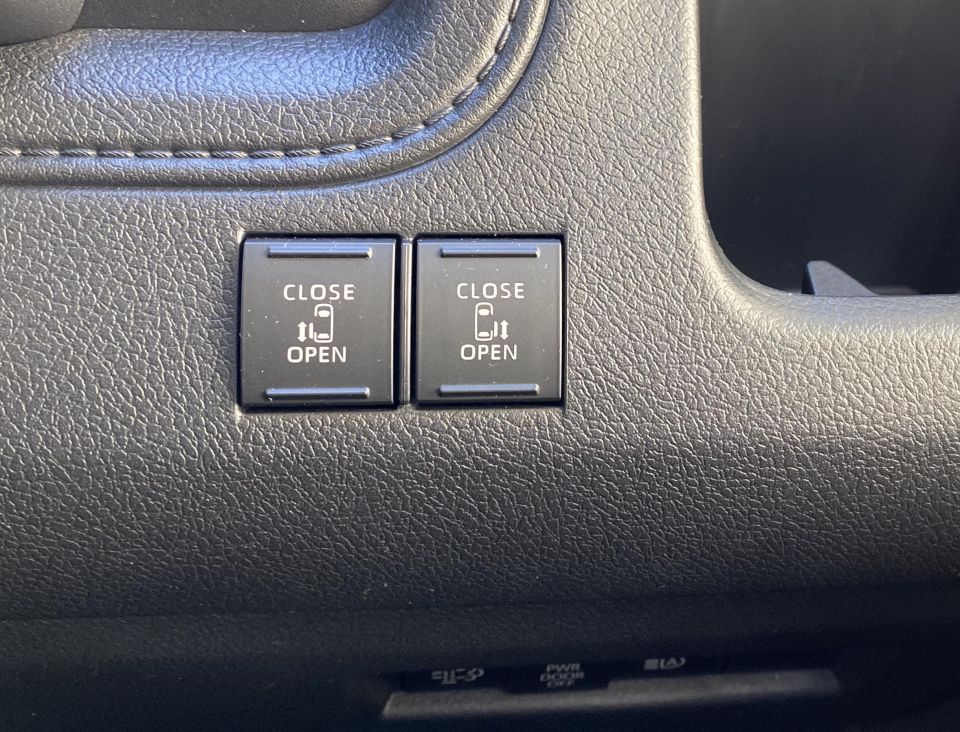

Buy your new car without the stress. It's fast, simple and completely free.

Great service from Travis and team, second time I have used this business would not hesitate to recommend them to anyone
Craig C.
Purchased a Ford Ranger in Sunshine Coast, QLD
CarExpert helped Craig save thousands on his Ford Ranger, now let us save you on your next new car.
Find a dealAll Granvias come with 17-inch alloy wheels and a full-size spare; automatic LED headlights, DRLs and taillights; heated and folding side mirrors, rain-sensing wipers; and keyless entry with starter button.
Inside there are LED lights; front and rear climate control adjustment; six rear USB points; a 7.0-inch touchscreen; DAB+; Apple CarPlay and Android Auto; and satellite-navigation with SUNA traffic updates.
The VX grade adds luxury extras like powered sliding side doors; quilted leather ‘accented’ seat upholstery; rear sun blinds; a Nanoe dehumidifier, a 360-degree camera; an auto-dimming rear-view mirror; and a Pioneer 12-speaker sound system.
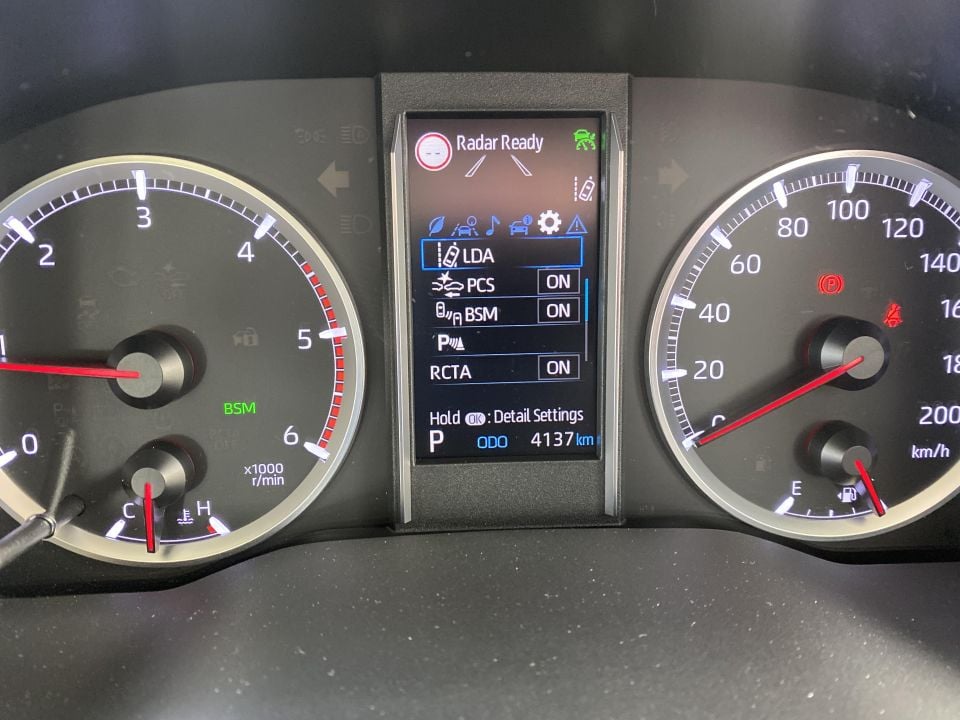
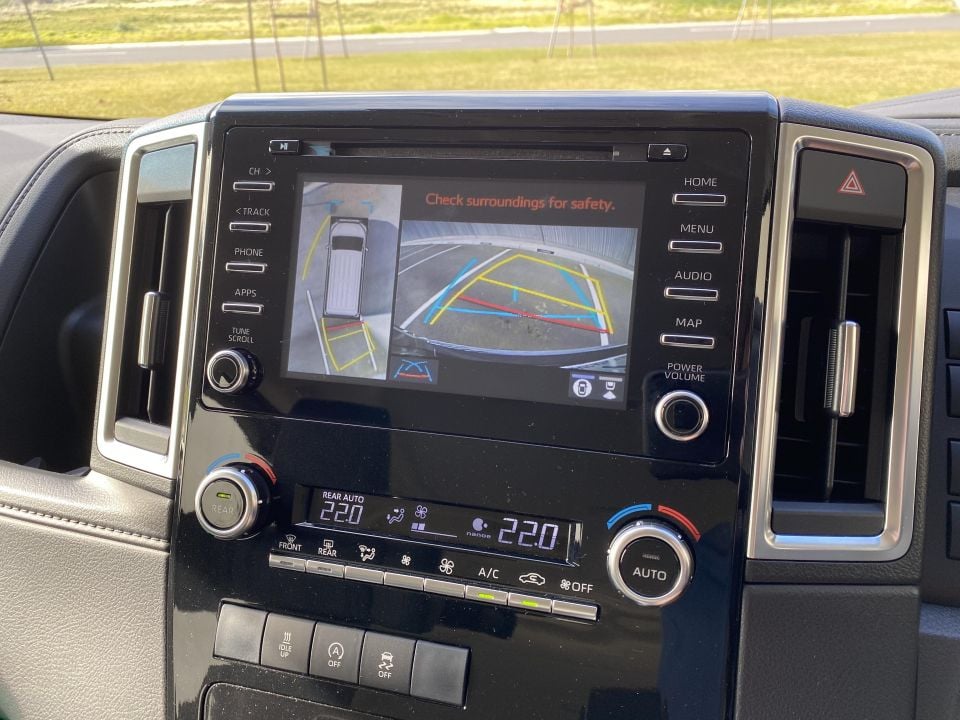
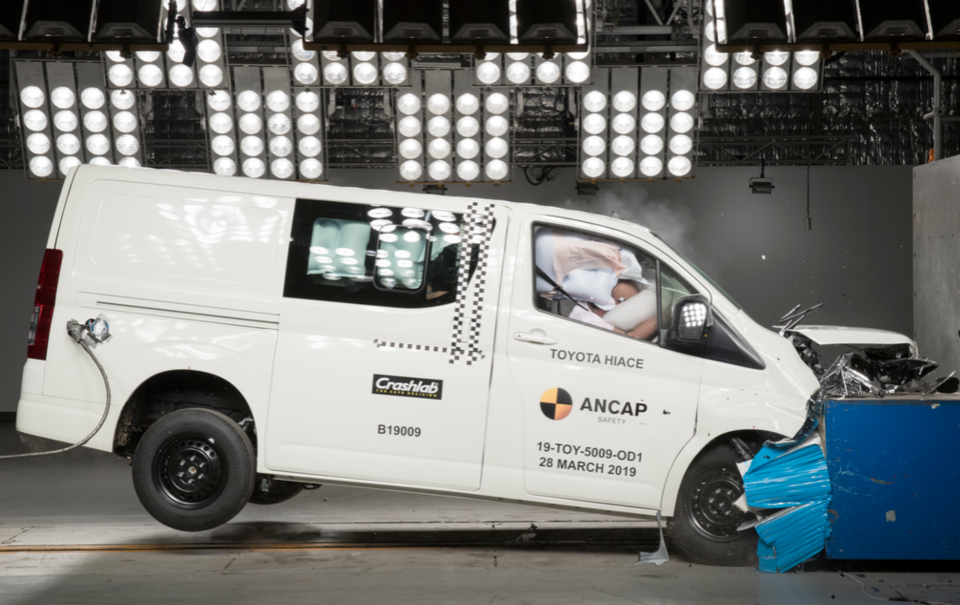
Crash tester ANCAP awarded the Granvia a five-star rating against 2019 protocols. It achieved 94 per cent for adult occupant protection, 88 per cent for child occupant protection, 84 per cent for vulnerable road user protection, and 79 per cent for safety assist.
The crash test report notes the presence of side, head-protecting airbags covering each seating row.
Toyota has certainly fitted the requisite safety features, including trailer sway control; autonomous emergency braking with pedestrian (day and night) and cyclist (night) detection; lane-departure alert with direction assist via corrective wheel braking and vibration; road-sign assist; blind-spot monitoring; rear cross-traffic alert; and high-speed active cruise control.
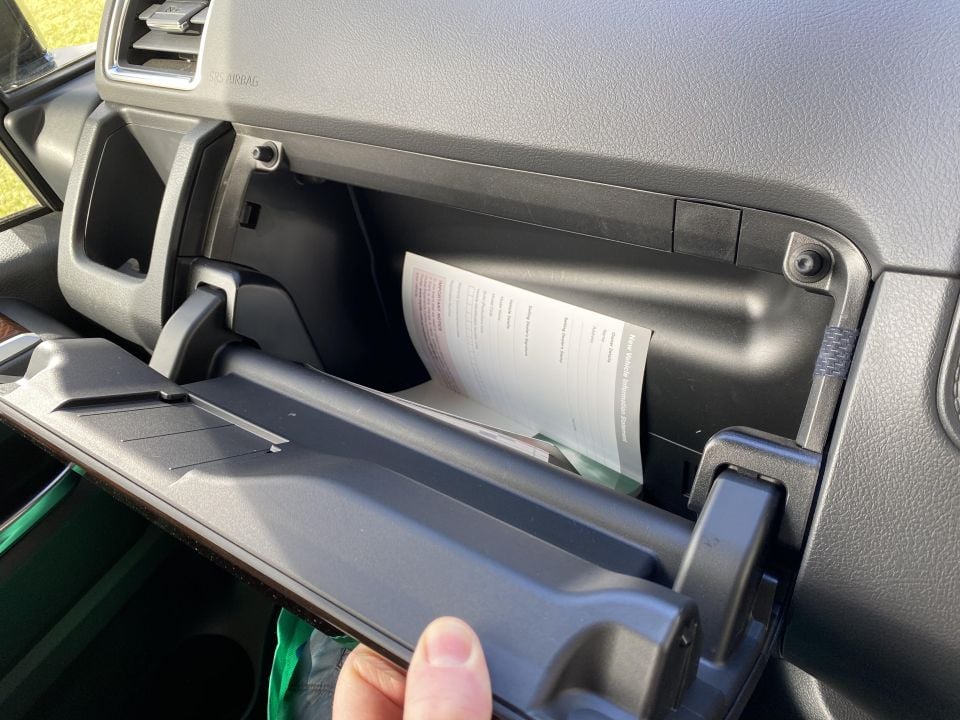
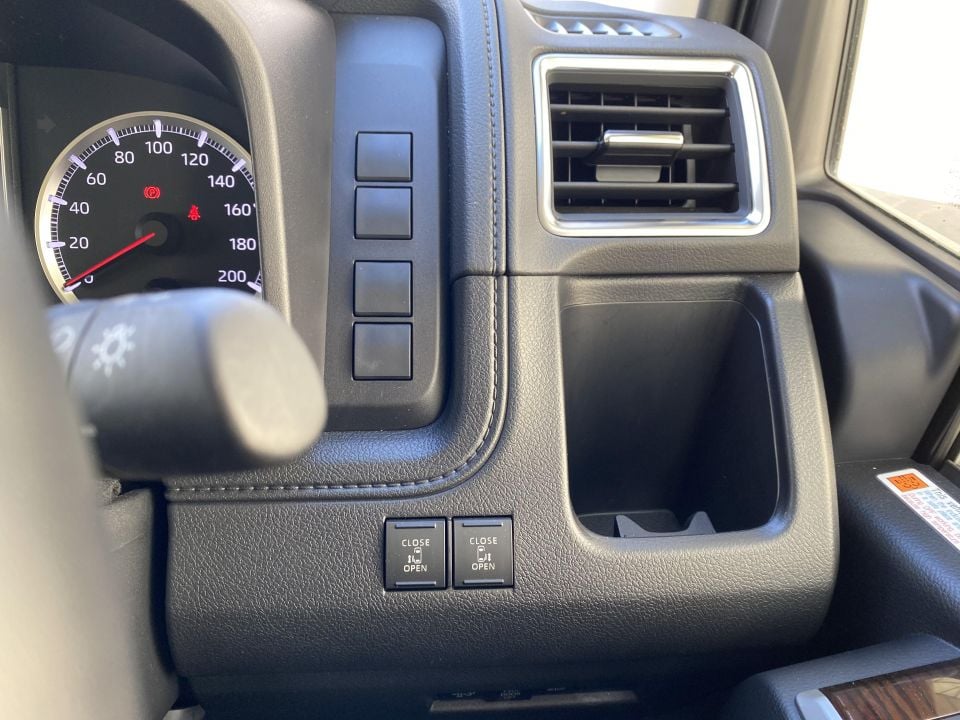

You sit up very high and get a commanding road view, with excellent vision thanks to the large side windows. The driver’s seat is comfortable and has power adjustment, while the steering wheel adjusts for both rake and reach. The TFT screen between the gauges has a digital speedo.
The ambience is altered by padded touch-points and lashings of (love/hate) woodgrain trim on the dash, tunnel and wheel. The rear part of the cabin gets LED lights for each row and roof vents, plus a bank of temperature adjustment controls located in the roof behind the driver’s head.
In true van style there are numerous storage areas scattered about: a large central lidded box, glovebox, cupholders, storage trays and door pockets that can swallow an A4 folder and a 1.5-litre bottle.
The touchscreen has satellite navigation as well as phone mirroring, while the overhead-view camera is a useful touch, sitting viz-a-viz a rearward view with guidelines.
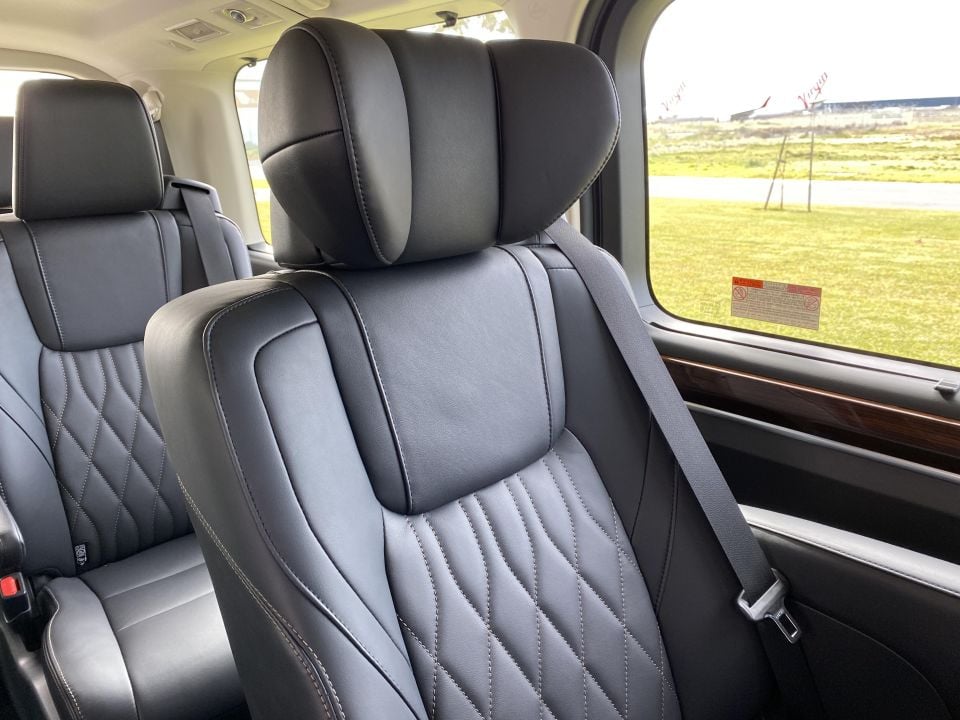
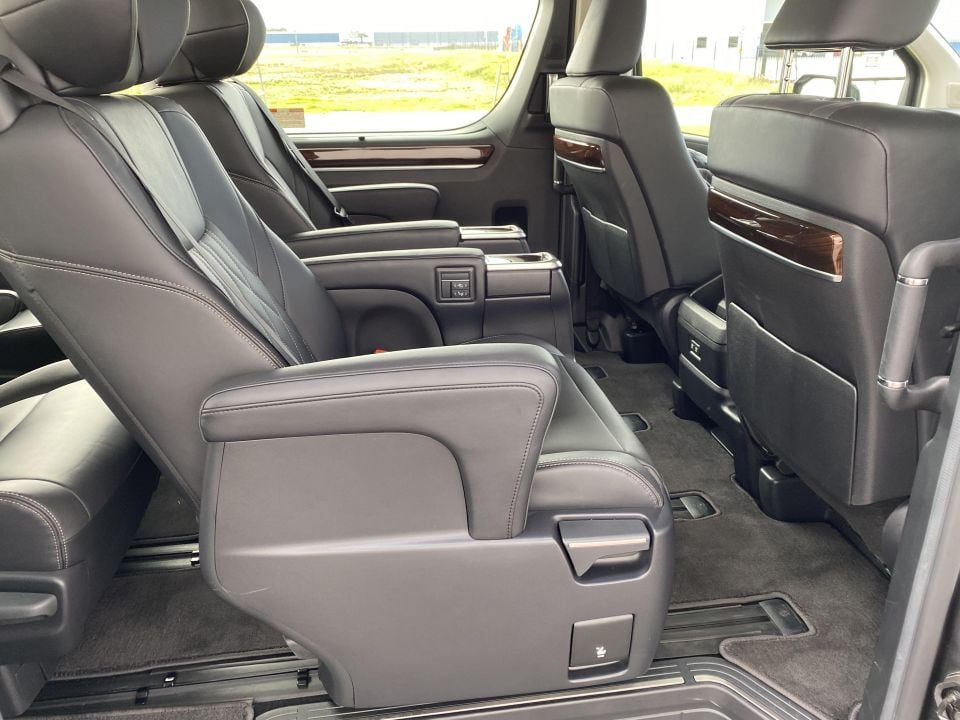
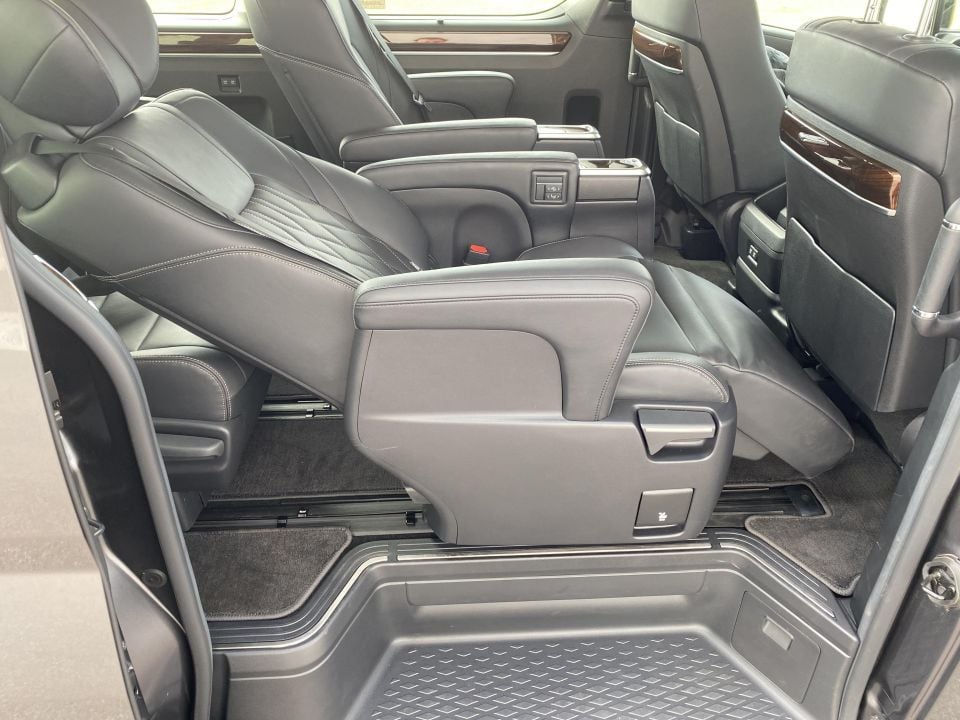
There are 10 steering wheels buttons, and numerous buttons and dials along the centra fascia that act as useful shortcuts, but there are also a few cheap-looking ‘blanks’ filling areas where buttons should go.
It’s all about the back seats though, where there are two options to choose from. There’s a six-seat cabin layout, or an eight-seat setup as tested here.
It seems counter-intuitive for a van measuring 5.3 metres long, almost 2 metres tall, and 3.2 metres between the wheels, to be fitted out to fix only six (an eight-seat Carnival is 5.1 metres long), but it actually might be the more compelling option.
The front-most of the six back seats in our test van are lavish indeed, and would not be out of place in the Business Class cabin of a Qantas 787.

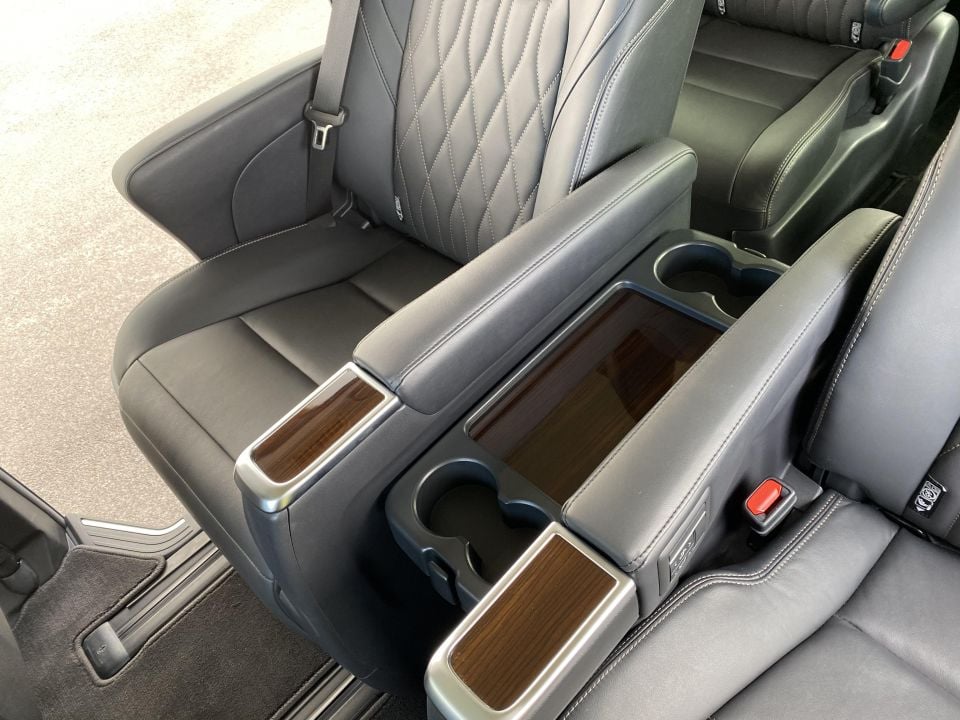

They’re quilted, have large arm rests and padded headrests, move forwards electrically, tilt 60-degrees back like a recliner armchair, have an ottoman-style leg cushion that also tilts outwards, and offer cupholders and mini side tables. And because of the tall body, vast reserves of headroom to boot.
Six-seater models can carry four rear guests this way, which might be just what a luxury hotel, country club or chauffeur service wants.
In our eight-seater, the third seating row instead sports manual ‘captain’s chairs’ – without the ottoman bit – which can move on rails, and are accessed by tilting and sliding those aforementioned second-row seats.
Behind these is a fourth-row made up of a two-seat bench trimmed in fake leather.

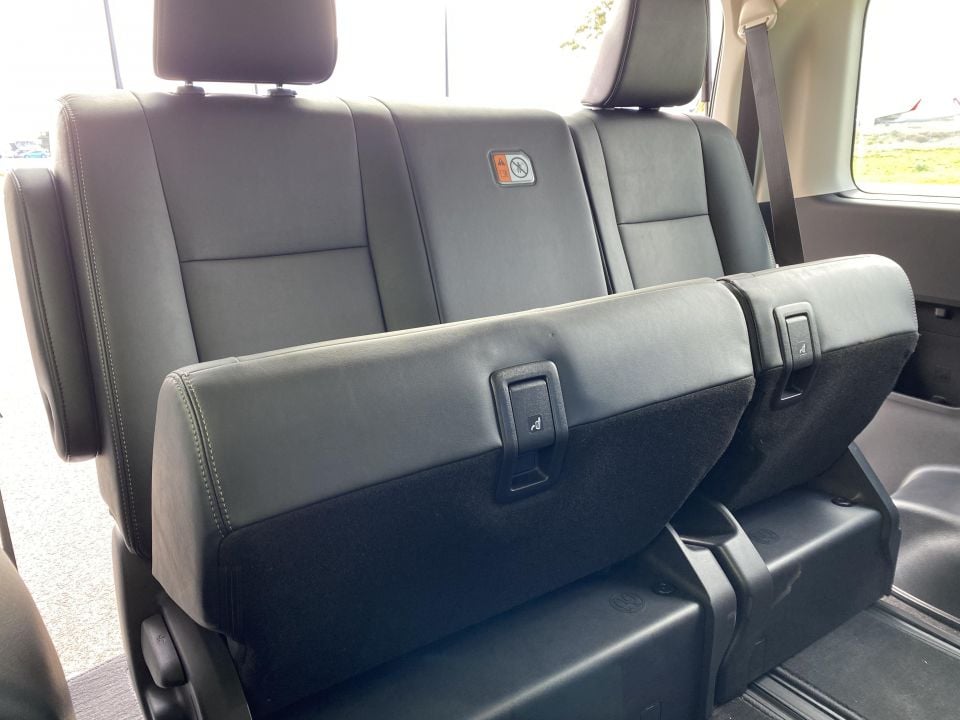
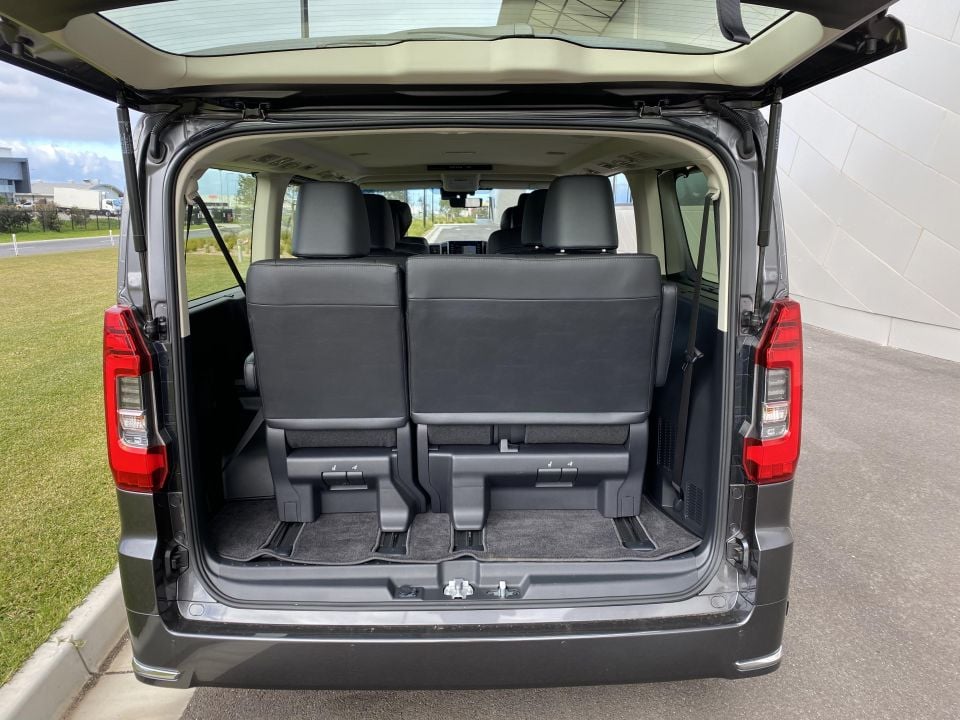
You can adjust the seat placement to fit four occupants in the rear passenger area in some comfort (though not with limo levels of legroom as you might hope), but if you’re going six-up excluding the front pair, it’s not as well-packaged as you’d want.
The fourth-row bench seat bases fold up and they slide forwards to free up more cargo space, but if you’re carrying the maximum occupant load in the eight-seater derivative there isn’t much cargo space to spare.
If you’re wanting to house luggage as well, you’ll need to have a covered box trailer that comes in below the rated towing capacity of 1500kg.
Ultimately, if you want a minibus, I’d say to buy a HiAce commuter. If you want an eight-seat people-mover with luggage space, consider a Carnival. The Granvia VX’s best application is as a luxurious six-seater, with four armchairs for maximum comfort and some cargo space. That’s its best selling point.
A Euro 5 2.8-litre turbo-diesel drives the rear wheels via a six-speed automatic transmission. It makes 130kW of power and 450Nm of torque, the latter from 1600rpm.
We have no confirmation if or when the updated 2.8 used in the HiLux and Prado, which makes 150kW/500Nm, will replace the current donk.
Toyota cites combined-cycle fuel use of 8.0 litres per 100km, 8.9L/100km in urban testing, and 7.5L/100km on highways. It has a 70L tank, and a modest braked-towing capacity of 1500kg.
The V-Class’s 2.1-litre diesel makes 120kW/380Nm, but is rated to tow 2500kg.
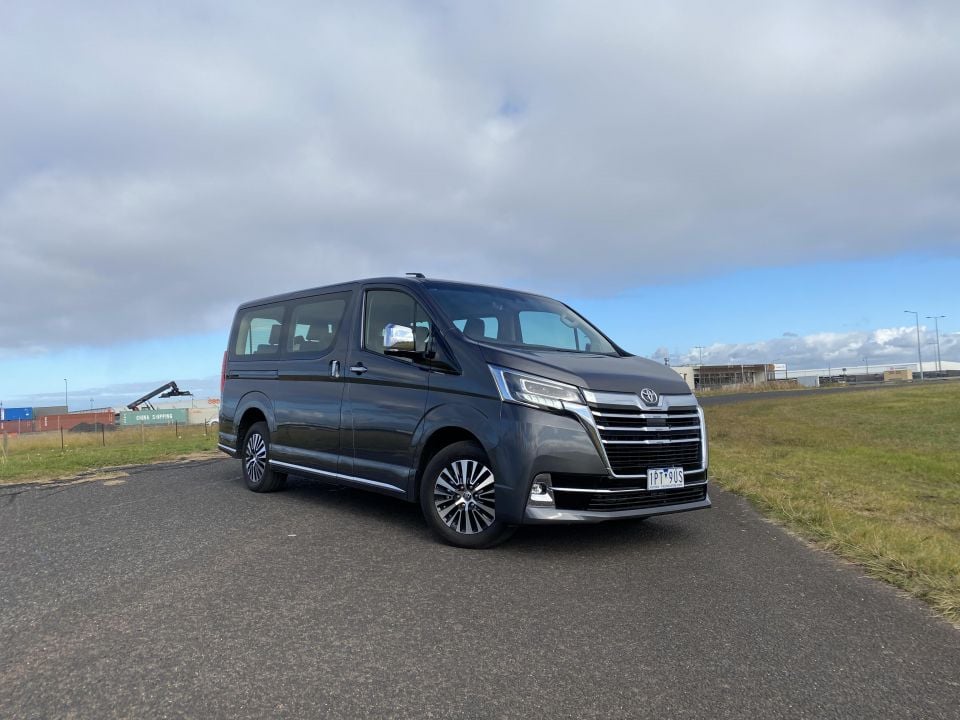
That engine isn’t a powerhouse, but it has sufficient low-down pulling power to chug along without too much issue, and the refinement levels are quite good. However, we’d suggest a hybrid might make sense as an option for Toyota to consider launching, to really ramp up the plushness.
Belying its commercial origins, it rides decently enough, and its handling through corners is acceptable, with body control that avoids being too wallowy. There’s a little bit of cabin echo, but it’s not too boomy on account of the plush carpeting and the windows.
It’s worth noting that the eight-seat VX tips the scales at 2660kg and has a gross vehicle mass of 3340kg, meaning your maximum passenger payload is 680kg.
At the front, the Granvia employs a MacPherson strut suspension with a stabiliser bar, while at the rear there’s four-link coil sprung rear suspension with stabiliser.
Stopping power is provided by ventilated discs on each wheel (front: 296mm, rear: 320mm) with twin-pot calipers on the front and single calliper brakes on the rear.
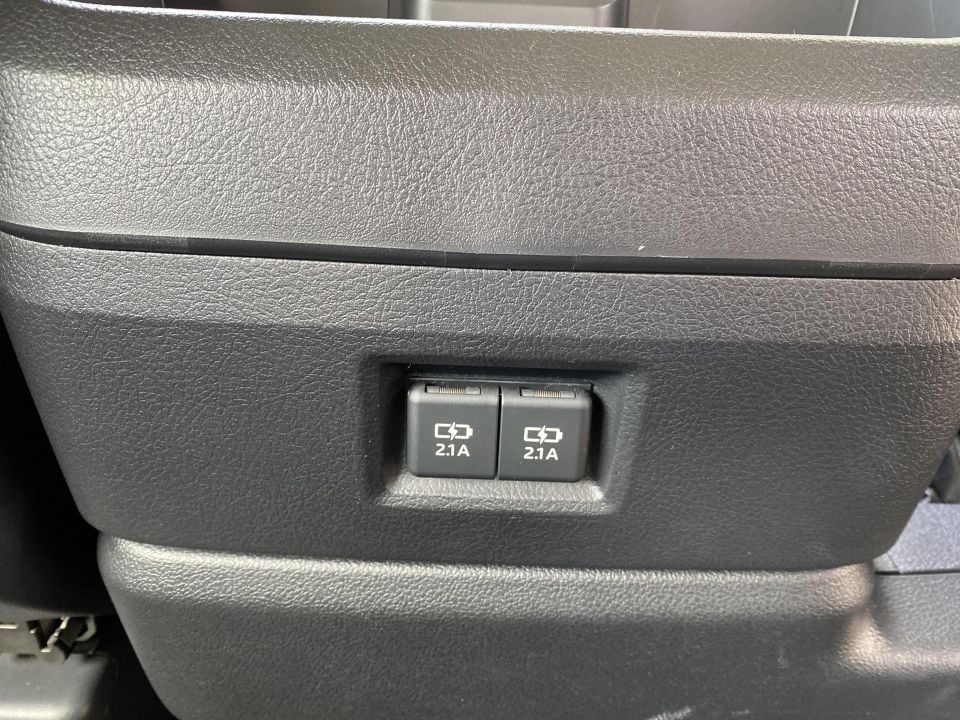
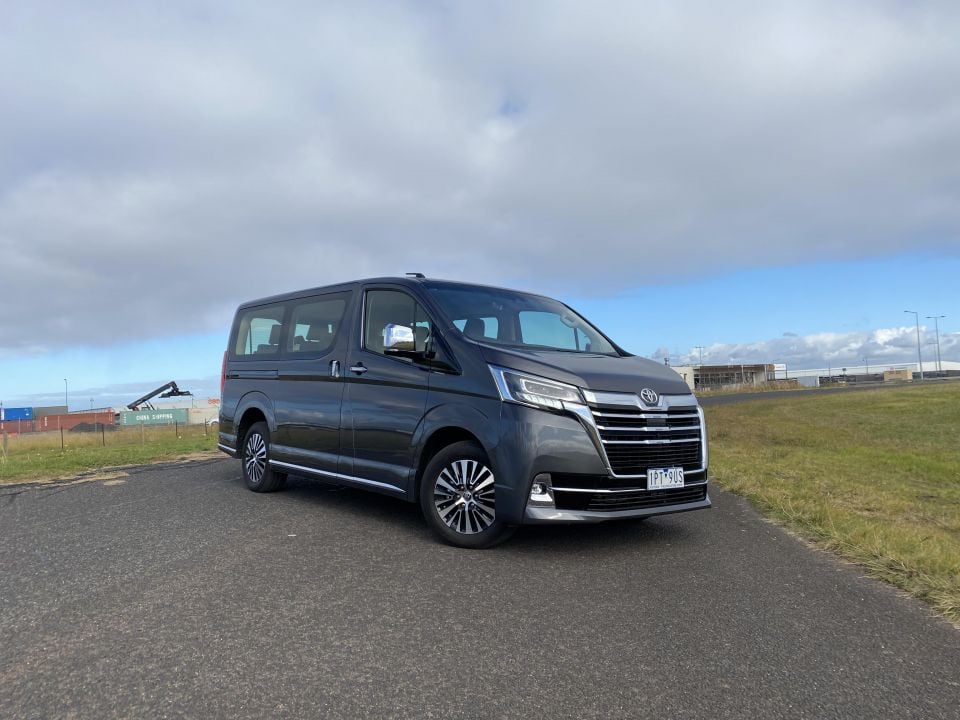
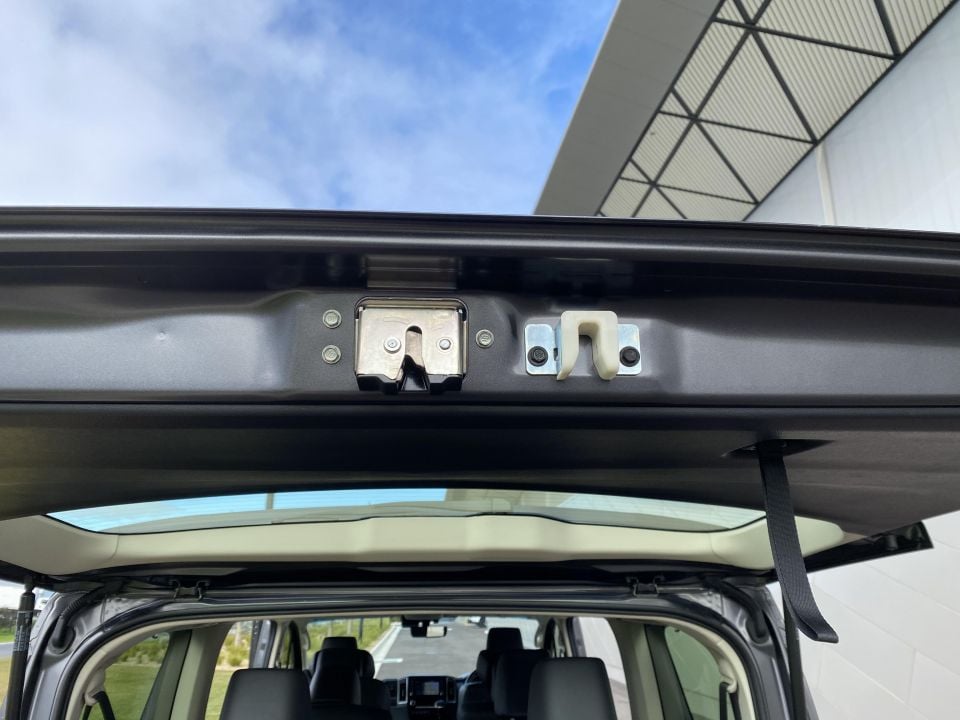
The Granvia is fitted with an ‘electronically-controlled’ LSD that applies the brakes to individual wheels to ensure drive torque is delivered to the rear wheel with the most grip.
A hydraulic power-assisted rack and pinion steering system allows a turning circle of 12m. The lack of a motor-drive steering system is why the lane-assist function cannot steering the car itself. But the weighting and resistance here is light nevertheless.
In short, the Granvia doesn’t drive like a bus. And if you’re not in a mad rush, the engine is sufficient.
All Toyota products come with a five-year, unlimited-kilometre warranty.
The first six scheduled services are capped at $240 (at the time of writing), but the intervals are a short six months or 10,000km, whichever comes first.
Given the average Granvia operator is likely to rack up high mileage, this means they’ll be heading back to the dealer a little more regularly than is ideal, from a downtime perspective.
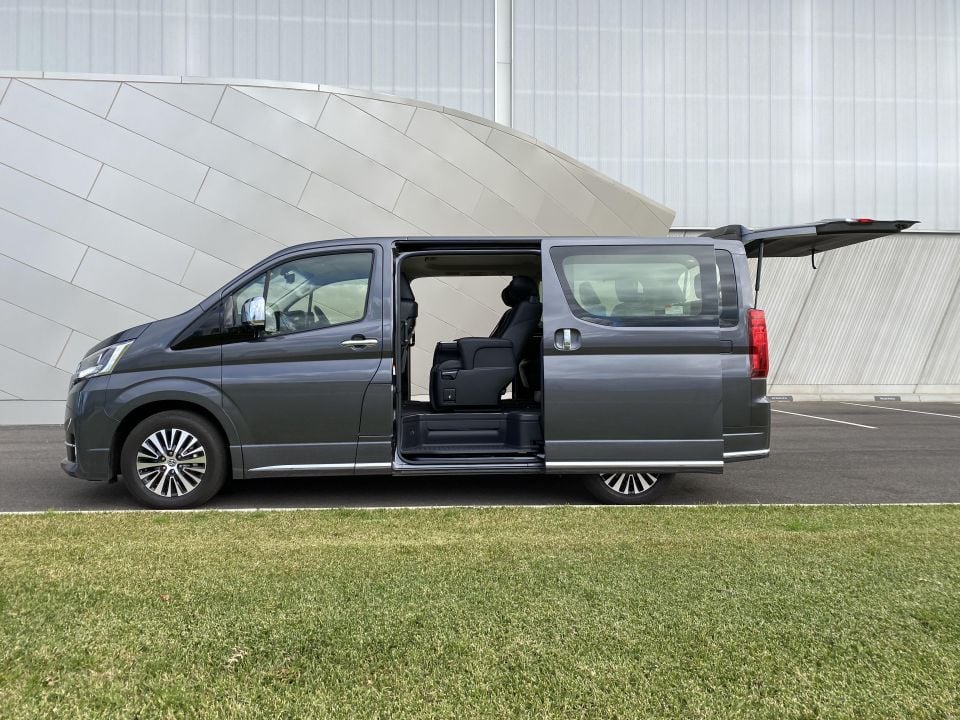
The luxurious Granvia VX plays in a niche corner of the market. While you might use it as a family hauler, it seems better suited to duties as a hotel shuttle or similar.
Given the eight-seater’s packaging, I’m inclined to suggest the six-seater version makes a but more sense, and will no doubt make clients very happy. The eight-seater’s lack of cargo space seems like an issue to me, but perhaps you have a user case that suggests otherwise.
What this Granvia isn’t, is a direct replacement for your old Tarago. Toyota seems to have its proverbial eggs in the Kluger basket when it comes to family haulers these days.
Where expert car reviews meet expert car buying – CarExpert gives you trusted advice, personalised service and real savings on your next new car.


William Stopford
4 Hours Ago


Ben Zachariah
5 Hours Ago


Derek Fung
5 Hours Ago


Matt Campbell
12 Hours Ago


William Stopford
1 Day Ago


Josh Nevett
1 Day Ago